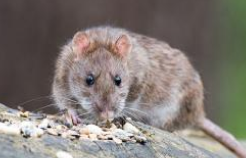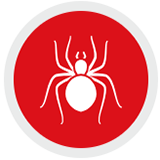PEST LIBRARY – COMMON PESTS IN SEATTLE
Dealing with a pest infestation you can’t identify? Here you can find information on some of the most common household pests found in the greater Seattle area.
Looking for an exterminator? Find the service you need!
Ants
The number one nuisance pest in North America, ants make up the majority of local pest problems. Varying by species, the average colony is made up of anywhere between 300,000 to 500,000 ants. With the capability of surviving more than seven years, it’s no surprise that they are likely to take up residence in your home.
Bed Bugs
One of the most feared pest infestations, bed bugs are small, flat insects that tend to congregate in mattress folds, furniture, carpet, or wall folds.
Cockroaches
Mostly nocturnal, cockroaches like to seek shelter from the outdoors. Likely to gravitate in dark, warm locations, many homeowners notice that cockroaches inhabit their bathrooms, closets, and kitchens. Ranging in color from light brown to black, the type of cockroach has much to do with the location they are likely to be found.
Crickets
More of a nuisance than a threat, house crickets are omnivorous scavengers that feed on almost anything in sight. Known to destroy both vegetable gardens and clothing, all while producing a repetitious chirping sound, crickets cause quite the disturbance! You can typically find more of these creatures in heavily wooded areas.
Earwigs
Appearing as more of a threat in comparison to other pests, earwigs are more of an eyesore than an actual threat. Though they don’t pose much harm to humans, they are still extremely unwelcomed by homeowners. And for good reason. These pests are most widely recognized for their menacing pincers and scorpion-like thorax.
Fire Ants
First introduced to the United States in the 1920s, fire ants are characterized by their copper color and painful sting. Although commonly found inhabiting a sandy-looking mound in your backyard, fire ants are also drawn into the comfort of your home by sugary and fatty foods. Regardless of whether you see them indoors or out, they are a threat to the safety of your loved ones.
Fleas
Most likely to affect your four-legged friends, fleas can also latch on to human hosts, exposing you to diseases like typhus and tularemia. In addition to applying flea treatment to your pets, it’s also a good idea to safeguard your home.
Grasshoppers
Grasshoppers are found on every continent but Antarctica. Here in the United States, grasshoppers typically inhabit dry, open areas with grass and other low plants. They can typically be found in fields, meadows, and backyards. Grasshoppers seek out dry areas, so they do find their way inside houses from time to time.
Indian Meal Moths
Indian meal moths prefer whole grain materials: nuts, raisins and other dried fruit, beans, popcorn, dried corn, some dried flowers, and sometimes wicker products. Treatment for Indian meal moths is essentially the same as for carpet beetles, but it needn’t be as extensive since the beetle’s choice of food materials is comparatively limited.
Mosquitoes
Not only are mosquitoes known for disrupting outdoor activities, but they are also vectors for dangerous diseases. Drawn to standing water and capable of laying up to 3,000 eggs in a lifetime, it’s no wonder that mosquitoes are one of the top nuisance pests in the U.S.!
Rodents
Including mice and rats, rodents can present a number of threats to homeowners. Known to chew through wires, causing electrical fires, transmit diseases, and even track in ticks, it’s always a good idea to prevent these pests before a problem occurs.
Silverfish
Due to their high reproduction rate and elusive nature, silverfish are some of the most difficult pests to eliminate once they have invaded your home. For this reason, preventative pest control is extremely important. With their appearance matching their name, silverfish probably aren’t something you want to find lurking around your home!
Spiders
Contrary to popular belief, spiders are not insects; they are actually arachnids, closely related to ticks and scorpions. Possessing the signature trait of eight legs and known to leave behind webs, spiders are notorious for spooking many homeowners.
Stinging Insects
There are a number of stinging insects common to North America, many of which pose a threat to your family’s well-being. Insects like bees, wasps, and hornets can cause painful, sometimes life-threatening, stings! It’s important to understand the behaviors and characteristics of these pests, so you can stay safe.
Termites
Causing more than $5 billion in damage to homes across the United States each year, termites are most common in the southern part of the nation. Since most homeowners’ insurance won’t cover termite damage, professional help and prevention methods are often recommended.
Ticks
Closely related to spiders, ticks also belong to the arachnid group. Relying on the blood of their hosts, ticks are likely to move from one mammal to another in order to survive. Due to their transient behavior, these pests are vectors of a number of diseases, including Rocky Mountain Spotted Fever and Lyme disease.
Voles
Voles are a type of rodent similar to the mouse, famously known for damaging the roots of your lawn, trees, and shrubs. There are 124 species of voles in the Northern Hemisphere, with 23 species commonly found throughout the United States, including the prairie vole, meadow vole, pine vole, and Oregon vole. With other names, like meadow mice, field mice, meadow moles, and ground moles, they are easily confused with mice, hamsters, shrews, moles, and other types of rodents.

 (425) 318-7912
(425) 318-7912
 MY ACCOUNT
MY ACCOUNT
 425-318-7912
425-318-7912







